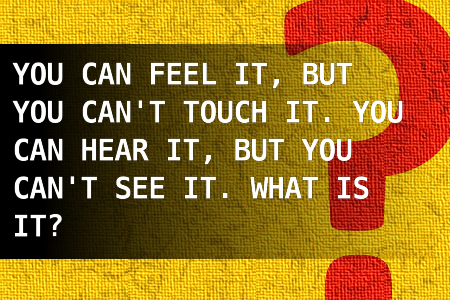You can feel it, but you can't...
Brain Teasers
[2862] You can feel it, but you can't... - You can feel it, but you can't touch it. You can hear it, but you can't see it. What is it? - #brainteasers #riddles - Correct Answers: 199 - The first user who solved this task is On On Lunarbasil

2016-10-09

